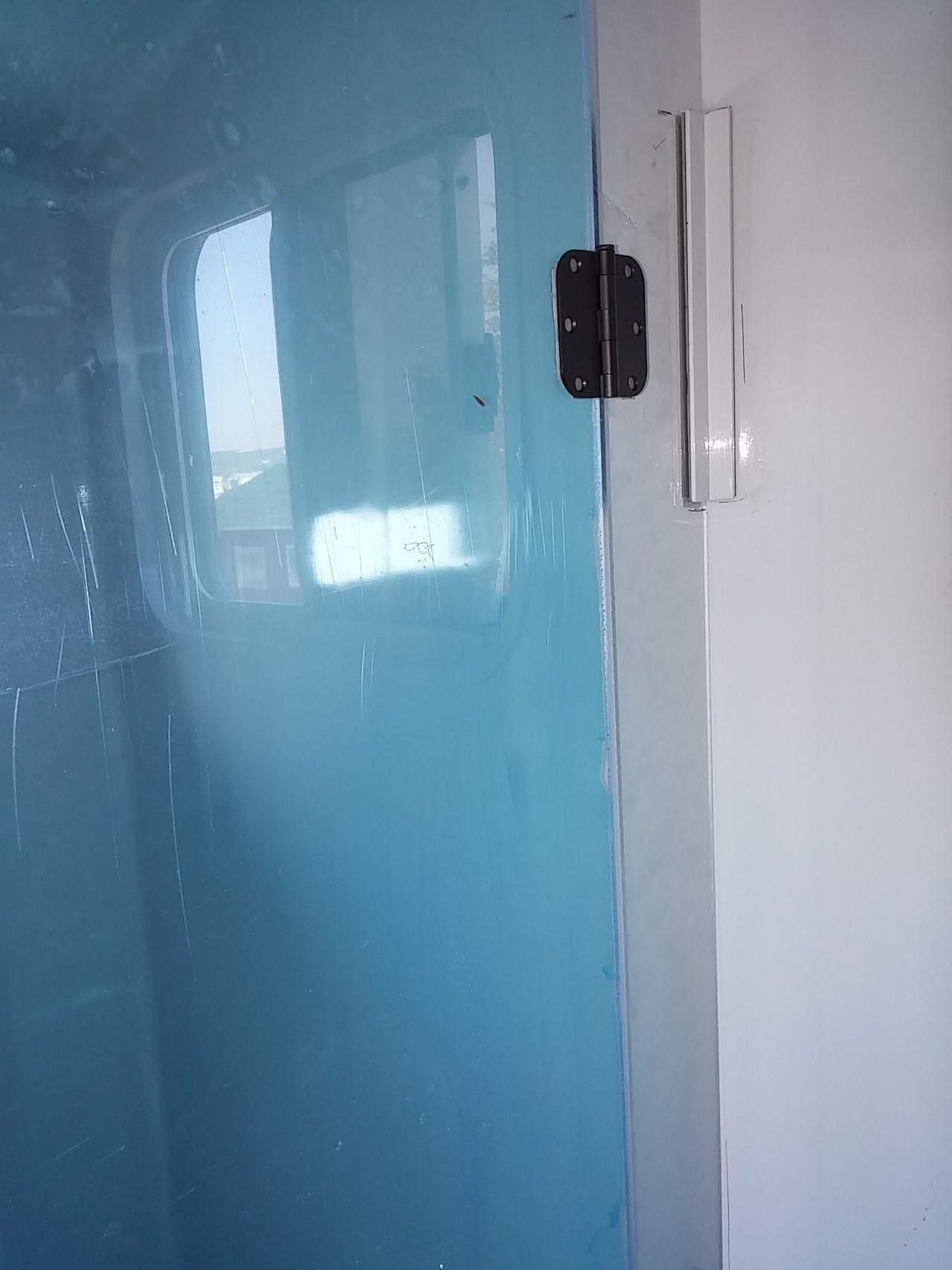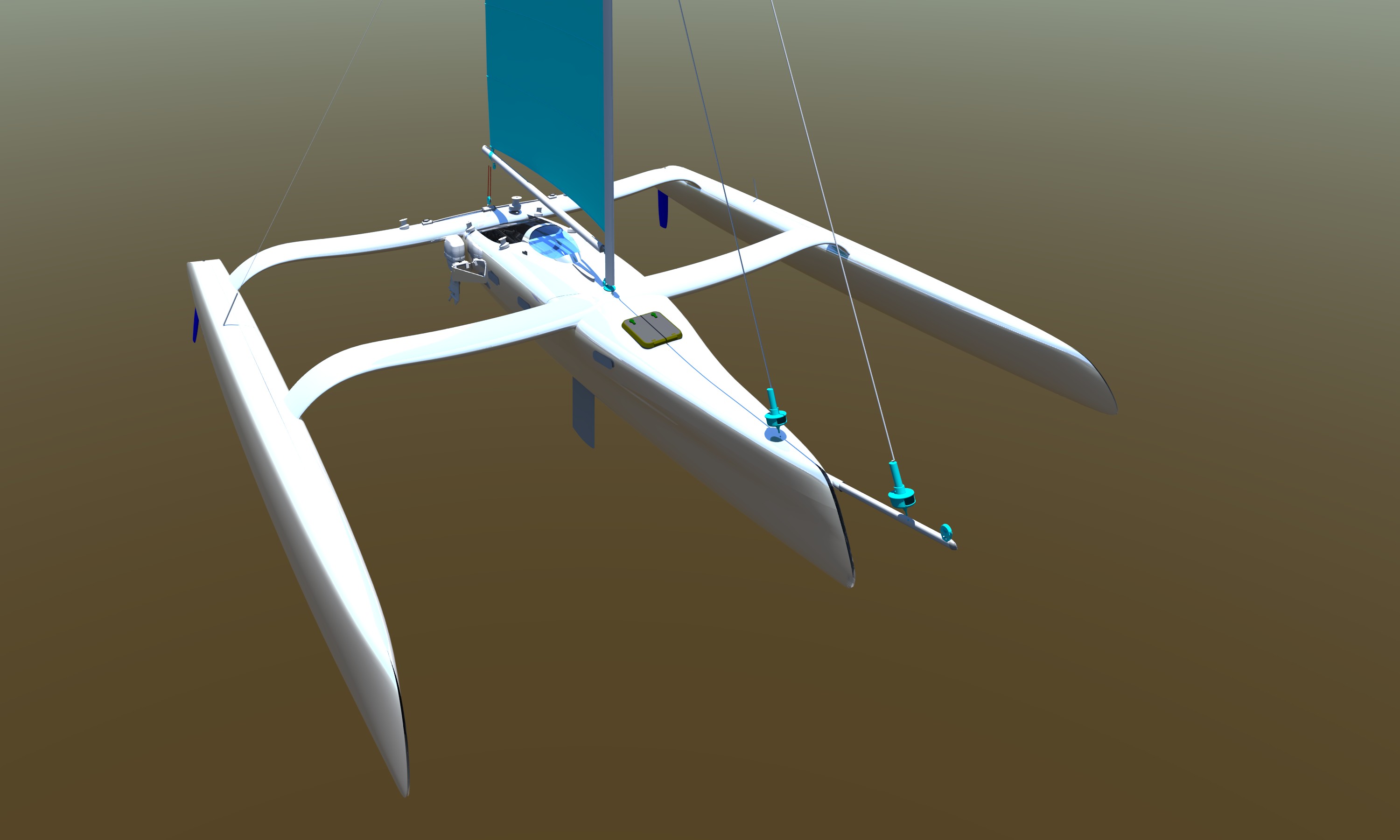When the Rapido 60 trimaran first appeared, I figured it was some kind of a joke. The styling recalled an F27 from 20 years ago. I teased that they owed Ian royalties. It’s beam overall was just over 38’, which some of mine, and most modern 40’ + trimarans, equal. My GS 60 beam overall, from 25 years ago, in E-glass, was 44.5’. Everybody knows that when you push a multi, wide is what keeps you right side up. So making it not wide had to be something to push onto the unsuspecting, right?

Almost all the pictures I saw of them had the crazy camouflage paint so it was never clear what was going on. I figured that they were not serious and didn’t think much more about them.
It was just pointed out to me that the R60s don’t have continuous mainstrength beams. Blew me away. Followers of this over the years have seen the importance of continuous fibers, fiber orientation, co-curing of mission-critical parts, not forcing composites into sharp turns…..
And here is one design that seems to ignore all that. What gives?
And that explains the narrow overall beam. That’s the only way to keep the loads down, besides throwing carbon at the problem.
Again, I have always declared that with enough carbon and enough money, one can have almost anything designed. This seems to be a prime example.
If we assume 24,000 lbs sailing weight, and a 12’ cantilever of the beam, then hit it with a shock load on one of the beams. The moment at the root will be something like a quarter million foot pounds. If the bury is 3’, then the load to resist will be some 80,000 lbs.
No wonder it is so heavy. Yes, heavy. 20,000 lbs. lightship. It is all carbon, right? That carbon has some 5 to 7 times the modulus of E-glass. Compare to my GS60 at 13,000 lbs., as designed, in mostly E-glass.
Main point. You can’t beat a continuous D section for the most beam strength and stiffness, the least weight, and least cost to build.
And again, all boats inhabit a place on a continuum between a habitat and a vehicle.
The R60 seems a bit confused. All the carbon tells me vehicle, but chopping up the lightest, strongest possible connecting beams to get more cabin space is right back to a 1960s Horstman; habitat.
None the less, I’m sure they will sell a lot of them. The owners can “Hey baby, I got a carbon boat.”
I prefer direct, simple solutions to magical ones.

